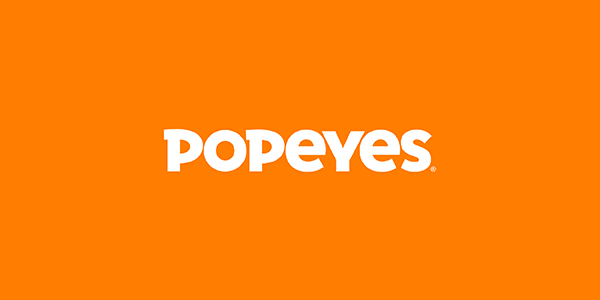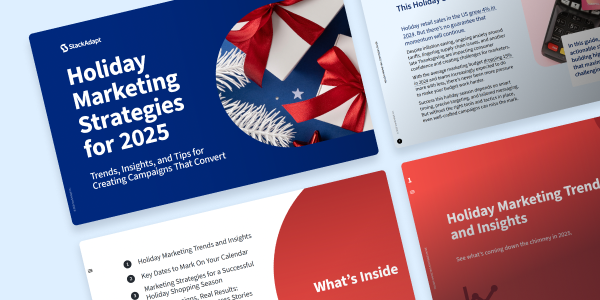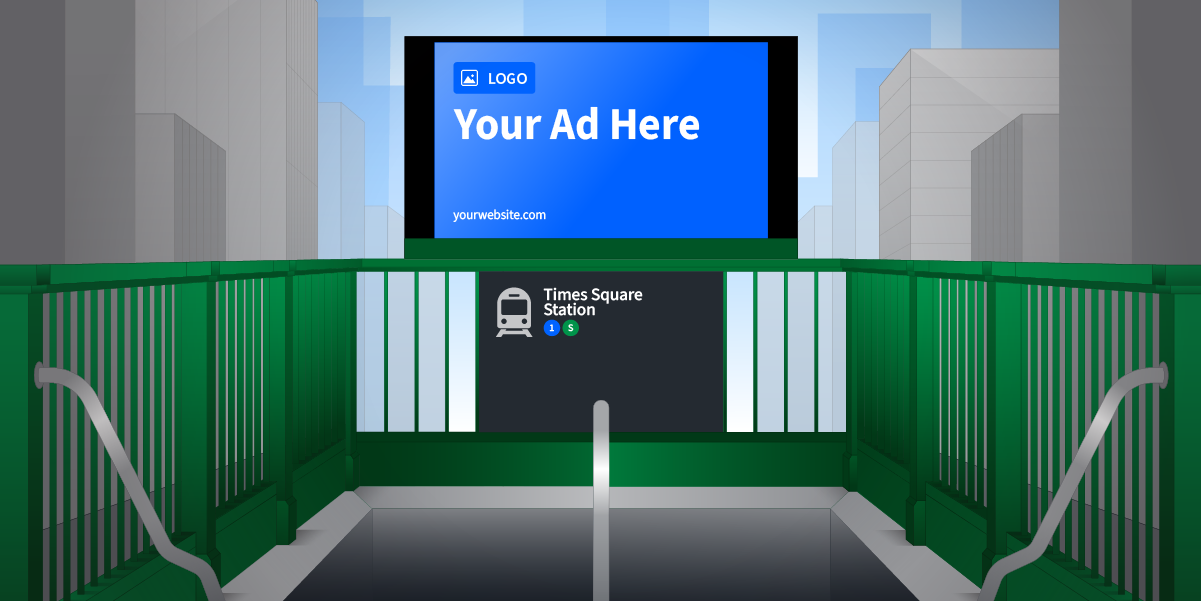Back to School Campaigns: Marketing Strategies, Ideas, and Examples

With back to school shoppers now making their purchases as early as July, it’s important for digital marketers to start planning their back to school campaigns well in advance—especially if they want to drive sales and maximize profits..
In 2024, US back to school spending was estimated to be $38.8 billion USD ($86.6 billion USD for college students), making it the second-highest sales year on record. Meanwhile, the global back to school market—estimated at $172.3 billion USD in 2024—is projected to grow at a CAGR of 4.8% between 2025 to 2030, with North America capturing 21.23% of the market.
That’s a lot of backpacks—not to mention shoes, laptops, and other important school supplies.
Prepping your back to school advertising plans early can help ensure your campaigns reach the right audience as they begin to think about back to school shopping. But you need the right strategy to be successful.
With that in mind, here are some A+ strategies, tips, and ideas to consider as you start planning your back to school campaigns.
1. Start Your Back to School Campaign Planning Early
Seriously, we can’t overstate this: it’s crucial to give yourself ample time to plan, budget, set goals, create compelling ads, and execute your marketing strategies to ensure a successful back to school campaign. Just like homework or studying for an exam, if you leave everything until the last minute, you may skip some critical steps and not get the results you’re looking for.
Your campaign goals and target audience will ultimately determine how early you should start planning your back to school campaigns.
Keep in mind the start dates for different types of schools—these dates vary between kindergarten, elementary school, college, and post-graduate programs, with elementary schools often starting the earliest and post-graduate programs the latest—and consider when your ideal customer is most likely to start shopping.
For example, the National Retail Federation (NRF) reports that as early as July, more than half (55%) of back to school and college shoppers have already begun buying items for the upcoming school year, and a 2024 survey from Deloitte found that 66% of back to school shoppers’ budgets were expected to be spent by the end of the month.
Share of Total Spend on Back to School Products by Shopping Period
In 2024, 66% of planned spend was expected to occur by the end of July, up from 59% in 2023.
Adjust your campaign timing and budget allocation to capture back to school shoppers’ attention early and drive sales throughout the entire shopping season.
2. Keep Up-to-Date on the Latest Trends for Back to School Advertising
A great starting point for planning seasonal shopping campaigns like back to school is looking at the latest shopping trends. For the best insights, you’ll want to look at data from the year prior.
Here are some key insights from Deloitte and NRF to help you get started with planning:
- 70% of back to school shoppers buy items both online and in-store.
- 7 in 10 shoppers prioritized convenience when deciding where to spend the most money.
- 50% of parents buy items for themselves while shopping for their children.
- The average parent planned to visit over four different stores while doing back to school shopping in 2024.
- 18% of back to school shoppers use generative AI to compile product reviews and save time researching products.
Along with leveraging shopping trends from the year before and predictions for the year ahead, you should review your prior back to school marketing campaigns—analyzing their performance can give you further insights into marketing trends and what products or services to focus on in the lead up to back to school.
3. Create a Detailed Profile of Your Target Audience
Understanding the target audience for your back to school campaigns might seem simple: back to school shoppers are traditionally parents, teachers, and students. But the reality is that these shoppers can span various demographics. Understanding who they are in more detail can only benefit your back to school marketing campaigns.
Customer profiles can help you understand everything you need to know about a specific group of target customers. You can leverage that information to create a digital marketing strategy that aligns with the wants and needs of your audience.
For example, NRF recently found that electronics were a higher priority for college students (33%) than for K-12 shoppers (20%), while shoes were more important for K-12 shoppers (45%) compared to college students, who often don’t prioritize footwear in back to school shopping.
A customer profile also helps you make informed decisions about the campaign messaging, ad creatives, channels, and targeting tactics to use.
Here are five key steps to building customer profiles for back to school ad campaigns:
- Identify a broad audience: Focus on the problem your product, service, or business aims to solve and who needs that problem solved. For back to school retailers, it’s pretty simple: their broad audience includes parents, teachers, and students.
- Narrow it down: This isn’t always straightforward, but it doesn’t have to be complicated. For example, if you’re a retailer selling laptops, you’re likely targeting students, but the age of those students will likely skew older.
- Consider what motivates your audience to buy: Their location, age, and other factors may impact your audience’s motivations. Some audiences may be looking for deals, while others could be looking for the latest trends.
- Consider your customers’ journey: Understanding how a customer goes from awareness and consideration to conversion helps you narrow down your audience even further. Knowing every touch point that a customer passes through before making a purchase will help inform what channels and ad formats you should leverage for your back to school campaigns.
- Create a detailed description of your ideal customer profile: You now have a clearer idea of your audience and their overall customer journey, so it’s time to consider their demographics in more detail, such as their age, income level, family size, occupation, education level, and marital status. Doing so can help refine your messaging, improve targeting accuracy, and maximize campaign effectiveness.
4. Consider Emerging Ad Channels and Formats for Your Back to School Campaigns
To capture the attention of parents and students, it’s important to know where they’re spending their time.
Over the past few years, there’s been growth in adoption and use of different platforms and advertising channels like TikTok, which was the most downloaded app in 2024, and connected TV (CTV), which is experiencing record-breaking ad spending and will soon surpass linear TV.
Meanwhile, retail media, digital audio (like podcasts and digital radio) and in-game advertising continue to see increased investments from US ad agencies and brands.
Students, parents, and teachers might scroll social platforms first thing in the morning. Then, a teacher might listen to a podcast on their commute to school. During the day, students and parents might browse online, and in the evening, they could all stream content together at home.
Creating a multi-channel strategy enables you to reach parents, teachers, and students throughout the entire funnel, creating a cohesive story across channels like native, display, video, CTV, audio, in-game, and digital out-of-home (DOOH).
It’s important to understand which channels are most effective for each audience segment and how they’re being used, as those insights can be leveraged to your benefit when running back to school marketing campaigns.
5. Optimize Targeting to Reach the Right Audience
Once you know your target audience and the best channels to reach them on, it’s time to consider how you’ll do it. Here are a few targeting strategies that can help ensure you reach the right audience with your back to school campaigns:
Use Geotargeting to Reach Consumers in Specific Locations
Geotargeting delivers back to school ads to an audience using the geographic location information of the recipient. Some demand-side platforms—like StackAdapt—offer targeting by country, state, province, county, city, zip code, or postal code and even allow you to target specific commercial addresses using latitude or longitude coordinates with geo-radius targeting.
Leverage Contextual Targeting to Reach Consumers Based on Their Life Stage
School is a major milestone for students and parents alike. You can leverage contextual targeting to place back to school ads on webpages that align with the content your target audience engages with. For example, a parent is likely to read articles that cover how to prepare their child for the first day of school, while a college-age student may be researching dorm essentials or laptop recommendations.
Placing ads for back to school clothing, accessories, or tech products on these pages helps you reach your audience when they’re most interested, ensuring your message resonates when they’re actively looking for related information.
Expand Your Reach Using 1st-Party Data
First-party audiences based on site visits and conversions are ideal for creating lookalike audiences. These audiences help you reach new consumers who share key characteristics with your existing customers, increasing the likelihood of engagement.
You can also use 1st-party data to build retargeting campaigns that re-engage visitors who have previously interacted with your brand or products, keeping your brand top of mind and driving them toward conversion.
Dynamically Retarget Individuals With Personalized Native or Display Ads
Retargeting is a key tactic in programmatic advertising, especially for back to school campaigns, because they keep your products top of mind for users who have previously browsed your site. Standard retargeting serves general brand ads to past visitors, reinforcing awareness and encouraging them to return. Dynamic retargeting, on the other hand, can take things a step further by displaying ads featuring the exact products users previously viewed, increasing brand recall and the likelihood of conversion.
Back to School Marketing Campaign Ideas and Examples
Want to get a better idea of what a full-funnel, multi-channel back to school campaign looks like in action? Here’s an example our in-house agency the StackAdapt Creative Studio put together using some of the back to school marketing strategies and ideas we shared above:
Step 1: Build Awareness With CTV
First, CTV ads introduce the brand to back to school shoppers with eye-catching creatives that showcase must-have styles for the season—reaching parents and students in a distraction-free viewing environment and driving strong brand recall early in the shopping cycle.
Step 2: Drive Further Engagement With Display Ads
Display ads reinforce brand recognition and encourage deeper consideration by featuring dynamic visuals tailored to different audiences. In-banner video ads, which can easily reuse the creatives from a CTV ad to reinforce brand recall, highlight trending outfits, while carousel ads let shoppers browse multiple styles within the ad, making it easier to discover the perfect look.
Step 3: Convert Back to School Shoppers With Dynamic Countdowns
As back to school shopping peaks, countdown display ads create a sense of urgency by emphasizing limited-time deals on high-demand items. This format drives action by reminding last-minute shoppers that time is running out to grab their essentials before the first day of school.
This three-step, end-to-end back to school marketing strategy ensures the brand stays top of mind throughout the entire shopping journey—from awareness to conversion—maximizing engagement and driving sales during the second busiest shopping season of the year.
Plan A+ Back to School Campaigns With StackAdapt
According to NRF, families with elementary and high-school-aged children planned to spend an average of $874.68 USD per child in 2024, while college students and their families were expected to spend an average of $1,364.75 USD—similar to spending trends from the previous year.
How much they’ll spend in 2025 and beyond remains to be seen.
But with education shifting to a digital-first model and consumers increasing their time spent on digital channels, running your back to school campaigns on programmatic is a perfect opportunity to tap into this growing market.
Want to run exceptional back to school campaigns? Request a demo to learn more about StackAdapt.







